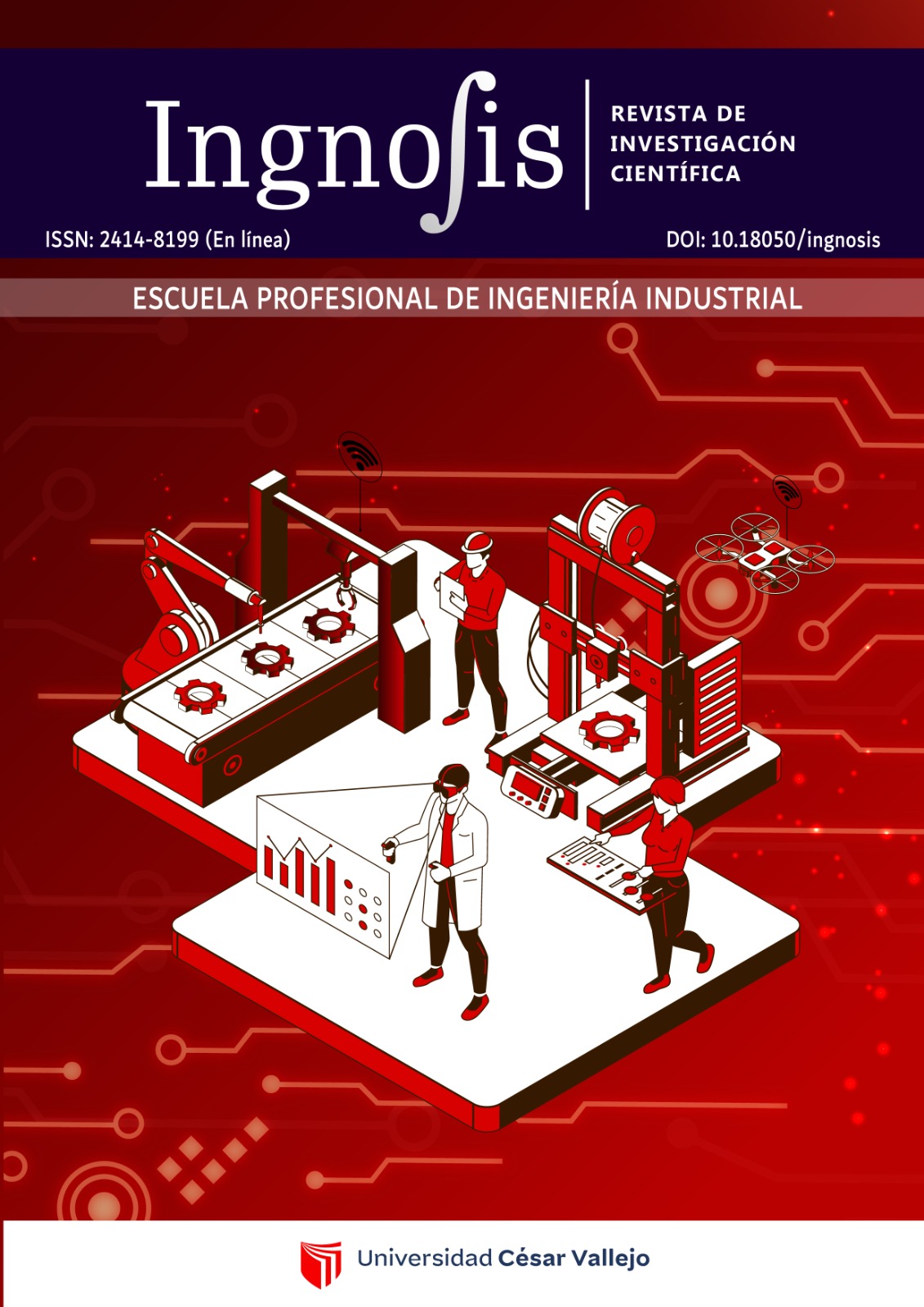Detection of facial masks using Artificial Vision and Neural Networks to avoid contagion of Covid-19
DOI:
https://doi.org/10.18050/ingnosis.v8i1.2439Keywords:
Mask, Programming, Neural Networks, Computer VisionAbstract
The objective of this article was to seek the detection of the use of the mask in people through an artificial vision program, applying the neural network model, where it is identified if the person wears the mask, thus seeking a contribution to mitigation and reduction of cases of contagion of Covid-19. In addition, the Python language is used together with Frameworks such as TensorFlow for the execution of trained neural networks and libraries such as Keras and Sklearn, used mainly in the learning process. Part of the methodology focused on the download and cloning of materials, creation and training of the neural network, the preparation of Anaconda together with Jupyter Notebook for the verification of the system. In the results we found that the programming correctly detected through a local medium, using Google Colab, for which a pre-established image bank was taken as a reference and the recognition was carried out. On the other hand, Jupyter Notebook is used for real-time video detection. Finally, it is concluded that it was possible to detect two types of images of people who are wearing or not wearing a mask with the variables "mask" and "no_mask", by training neural networks with a batch size of 8, steps of 50 and epochs of 25, with a classification loss result of 0.2120.
Downloads
References
Chang, A. C. (2020). Artificial intelligence and COVID-19: Present state and future vision. Intelligence-Based Medicine: Reported de una investigation, 3, 100012.
Ramírez-Guerrero, J. (2021). The importance of nonmedical face masks in the general population during the COVID-19 pandemic. A narrative review. Revista Mexicana de Anestesiología, 44(2), 130–138.
Ale, NA y Fabián, J. (2019). Detección del estado fisiológico de los ojos en conductores mediante técnicas de visión artificial: Técnicas de visión por computadora para la detección del estado fisiológico de los ojos conductores. INGENIARE - Revista Chilena de Ingeniería, 27 (4), 564–572.
Oliveira-Teixeira, F., Donadon-Homem, T. P., & Pereira-Junior, A. (2021). Aplicación de inteligencia artificial para monitorear el uso de mascarillas de protección. Revista Científica General José María Córdova, 19(33), 205-222.
BID-Banco Interamericano de Desarrollo (2021). COVID-19: Reporte Situacional. (Citado el 03 de noviembre del 2021) ElBID. 4-48. Recuperado de: https://www.iadb.org/es/coronavirus/current-situation-pandemic
Andrade Carrera, H., Sinche Maita, S., e Hidalgo Lascano, P. (2021). Modelo para detectar el uso correcto de mascarillas en tiempo real utilizando redes neuronales convolucionales. Revista de Investigación en Tecnologías de La Información, 9 (17), 111–120.
Chóez Vera, MN y Palma Toledo, CM (2021). Prototipo Web detector de mascarilla mediante RTMP y visión artificial para el control dentro del transporte público del norte de Guayaquil en tiempo de pandemia. Tesis de Licenciatura. Universidad de Guayaquil, Guayaquil, Ecuador.
Montesdeoca Ordoñez, ED (2020). Implementación de un sistema de reconocimiento del uso de mascarillas como medida de precaución contra el covid19 usando deep learning. Trabajo de Titulación de Ingeniería de Sistemas. Universidad Técnica de Machala, Machala, Ecuador.
Niño Rondón, C. V., Castro Casadiego, S. A., & Medina Delgado, B. (2020). CARACTERIZACIÓN PARA LA UBICACIÓN EN LA CAPTURA DE VIDEO APLICADO A TÉCNICAS DE VISIÓN ARTIFICIAL EN LA DETECCIÓN DE PERSONAS. Revista Colombiana de Tecnologías de Avanzada, 2(36), 83-88.
Maguiña Vargas, C., Gastelo Acosta, R., & Tequen Bernilla, A. (2020). El nuevo Coronavirus y la pandemia del Covid-19. Revista Médica Herediana, 31(2), 125-131.
Márquez Peiró, J., Gaspar Carreño, M., García Cases, S., & Achau Muñoz, R. (2020). "Mascarillas: producto imprescindible en la pandemia COVID-19". Revista OFIL – ILAPHAR 2020, 30(3); 189-191.
Pradilla Cobos, E., & Márquez López, L. (2021). "Las ciudades latinoamericanas y el coronavirus". Sao Paulo. Revista Cadernos Metrópole 23 (52)
AL-Hashimi, M. y Hamdan, A. (2021). Las aplicaciones de la inteligencia artificial para controlar COVID-19: Estudios en sistemas, decisión y control. SpringerLink, 55–75
Chuquimarca Jiménez, L.; Pinzón Tituana, S.; Rosales Pincay, A. (2021). Detección de Mascarilla para COVID-19 a través de Aprendizaje Profundo usando OpenCV y Cascade Trainer GUI. Revista Científica y Tecnológica UPSE, 8 (1) pág. 68-73.
Andrade Carrera, H. E. (2021). Desarrollo de un sistema de control de acceso en base a detección de temperatura corporal y al correcto uso de mascarillas en tiempo real. Tesis para obtención de Título. Universidad Politécnica Nacional, Quito, Ecuador.
Gutiérrez J., Trujillo D., Bedoya A. & Botero A (2021) Infección por COVID-19 previo al inicio de la epidemia en Colombia. Revista Infectio 2021; 25(4): 296-299.
Leo, M., Medioni, G., Trivedi, M., Kanade, T., & Farinella, G. M. (2017). Computer vision for assistive technologies: Computer Vision and Image Understanding. ElSevier, 154, 1–15.
Downloads
Published
How to Cite
Issue
Section
License
Copyright (c) 2023 INGnosis

This work is licensed under a Creative Commons Attribution-NonCommercial 4.0 International License.











